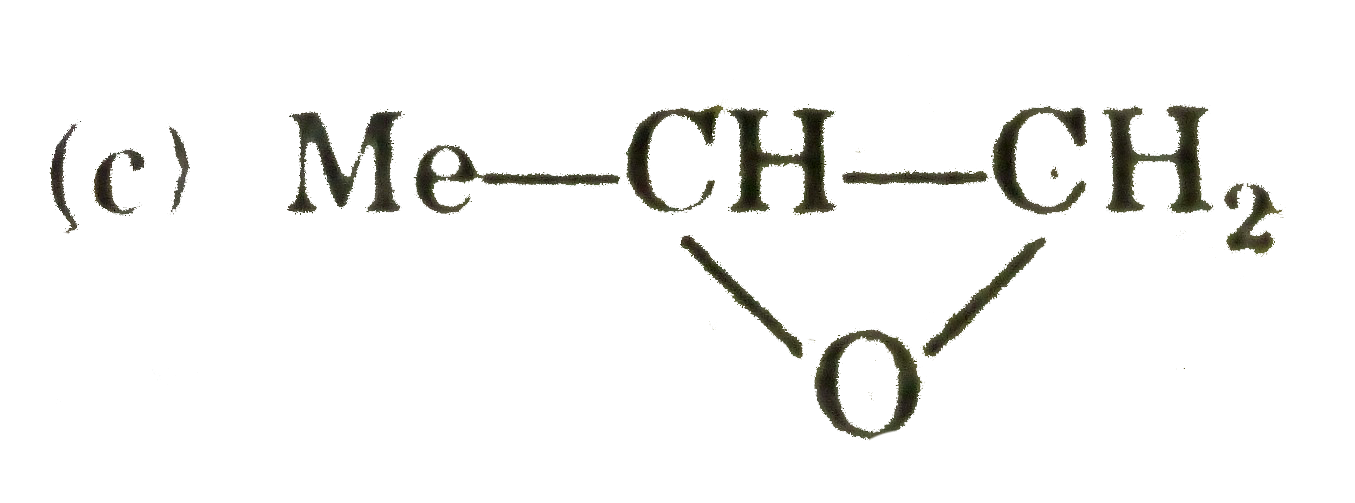Glucose on reduction with NaBH4 gives
sorbitol
Fructose
Glycerol
None of these
The correct Answer is:A
To solve the question "Glucose on reduction with NaBH4 gives," we need to follow these steps:
Step 1: Understand the structure of glucose
Glucose is a simple sugar (monosaccharide) with the molecular formula C6H12O6. It has an aldehyde group (-CHO) at one end and multiple hydroxyl groups (-OH) attached to its carbon skeleton.
Step 2: Identify the reducing agent
Sodium borohydride (NaBH4) is a common reducing agent used in organic chemistry. It is known for its ability to reduce aldehydes and ketones to their corresponding alcohols.
Step 3: Perform the reduction reaction
When glucose is treated with NaBH4, the aldehyde group at the first carbon (C1) is reduced to a primary alcohol. This means that the -CHO group is converted to -CH2OH.
Step 4: Write the product structure
After the reduction, the structure of glucose changes. The original aldehyde group (C1) becomes a primary alcohol, resulting in the formation of sorbitol, which is a sugar alcohol. The structure of sorbitol can be represented as:
- CH2OH (at C1)
- C2: OH
- C3: OH
- C4: OH
- C5: OH
- C6: CH2OH
Step 5: Conclusion
Thus, the reduction of glucose with NaBH4 yields sorbitol.
Final Answer
Glucose on reduction with NaBH4 gives sorbitol.
---
Glucose is a simple sugar (monosaccharide) with the molecular formula C6H12O6. It has an aldehyde group (-CHO) at one end and multiple hydroxyl groups (-OH) attached to its carbon skeleton.
Sodium borohydride (NaBH4) is a common reducing agent used in organic chemistry. It is known for its ability to reduce aldehydes and ketones to their corresponding alcohols.
When glucose is treated with NaBH4, the aldehyde group at the first carbon (C1) is reduced to a primary alcohol. This means that the -CHO group is converted to -CH2OH.
After the reduction, the structure of glucose changes. The original aldehyde group (C1) becomes a primary alcohol, resulting in the formation of sorbitol, which is a sugar alcohol. The structure of sorbitol can be represented as:
- CH2OH (at C1)
- C2: OH
- C3: OH
- C4: OH
- C5: OH
- C6: CH2OH
Thus, the reduction of glucose with NaBH4 yields sorbitol.
Glucose on reduction with NaBH4 gives sorbitol.
Topper's Solved these Questions
- BIOMOLECULES AND POLYMERBook:ERRORLESS Chapter:BIOMOLECULES AND POLYMERExercise:Jee setction (More than one choice correct answer)
Explore 21 Videos
- BIOMOLECULES AND POLYMERBook:ERRORLESS Chapter:BIOMOLECULES AND POLYMERExercise:Jee setction (Reasoning type question )
Explore 8 Videos
- BIOMOLECULES AND POLYMERBook:ERRORLESS Chapter:BIOMOLECULES AND POLYMERExercise:Critical thinking (objective question)
Explore 37 Videos
- ANALYTICAL CHEMISTRYBook:ERRORLESS Chapter:ANALYTICAL CHEMISTRYExercise:JEE Section (Only One Choice Answer)
Explore 36 Videos
- CARBOXYLIC ACID AND THEIR DERIVATIVESBook:ERRORLESS Chapter:CARBOXYLIC ACID AND THEIR DERIVATIVESExercise:Jee Section (Matrix Match type Questions)
Explore 2 Videos
Similar Questions
Knowledge Check
Cinnamaldehyde on reduction with NaBH4 gives
AC6H5CH2CH2CH2OHBC6H5CH=CH−CH3CC6H5CH=CH−CHODC6H5CH=CHCH2OHCompound which gives alcohol on reduction with NaBH4is/are
AMe−C∣∣O−ClBMe−C∣∣O−NH2C DMe−O∣∣C−O−O∣∣C−Me
DMe−O∣∣C−O−O∣∣C−MeThe open - chain glucose on oxidation with HIO4 gives
A5HCOOH+H2C=OB4HCOOH+2H2C=OC3HCOOH+3H2C=OD2HCOOH+4H2C=O
2 moles of acetaldehyde are warmed in the presence of 10% Ba(OH)2 to give a product which dehydrates to a compound X. The compound on reduction with NaBH4 will give
View SolutionEthylethanoate on reduction with LiAlH4 gives
View SolutionReduction of glucose with NaBH4 gives
View SolutionCompound which gives alcohol on reduction with LiAlH4 is/are :
View SolutionNitrobenzene on reduction with LiAIH4 in ether gives
View Solution

